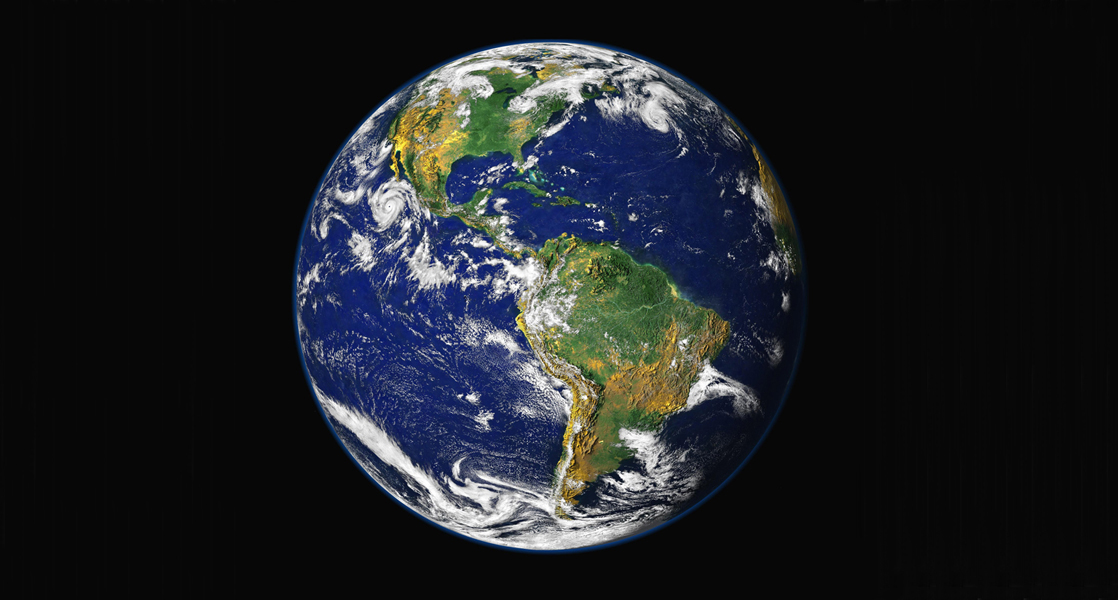
1.1 The study of life Read Online

Viewed from space, Earth offers no clues about the diversity of life forms that reside there. The first forms of life on Earth are thought to have been microorganisms that existed for billions of years in the ocean before plants and animals appeared. The mammals, birds, and flowers so familiar to us are all relatively recent, originating 130 to 200 million years ago. Humans have inhabited this planet for only the last 2.5 million years, and only in the last 200,000 years have humans started looking like we do today.
After completing this assignment you will understand the interplay of biology and culture.
You will be able to explain the role of natural selection in human evolution and a discussion of the rise of Homo sapiens, you will be able to define racism, and explain its functions in society and why it lacks scientific validity.
You will be able to explain how ideas about differences between men and women influence the ways in which social roles are assigned.
You will understand the concept of supernumerary genders. You will be able to explain the causes of gender stratification.
Finally, you will be able to discuss sexual orientation, homophobia, and heterosexism.
Question: Anatomically modern Homo sapiens first occur in ______________.
Choices:
coastal regions along the Red Sea coast of Africa.
central Africa.
Europe.
Asia.
Question: Which of the following is true of masculinity and femininity?
Choices:
All cultures characterize masculine and feminine roles in the same way.
Femininity is defined the same way in all cultures, but masculine roles are more variable.
Men are recognized to be naturally aggressive in all cultures, but feminine roles are quite variable.
there is diversity in how both masculine and feminine roles are defined in different cultures.
Question: The Two Spirits (berdache) status _______________.
Choices:
involved gender mixing.
was found primarily in West Africa.
was a stigmatized status.
was not practiced by females.
Question: The percentage of persons whose life-long sexual orientation is towards other members of their own sex is approximately _______________.
Choices:
about 30 percent.
about 15 percent.
about 10 percent.
about 4 percent.
Question: a form of social system in which high female status is maintained by the absence of men and female control of food production
Choices:
biological evolution
natural selection
anatomically modern Homo sapiens
bipedalism
races
racism
racist beliefs
IQ (intelligence quotient)
"culture-free" intelligence tests
sex
gender
gender stereotypes
sexism
gender stratification
patriarchy
purdah
female genital mutilation (FGM)
matrifocality
sexual orientation
homophobia
heterosexism
Question: How does sex relate to gender?
Choices:
Gender is a synonym for sex.
Sex refers to biological distinctions, gender refers to social statuses and roles.
The term “sex” encompasses both biological characteristics and gender characteristics.
Gender is the generic term for the combination of our sexual learned differences and our socially learned characteristics.
Question: Anatomically modern Homo sapiens first appear about _______________.
Choices:
10,000 years ago.
50,000 years ago.
110,000 years ago.
200,000 years ago.
Question: How is biological evolution defined?
Choices:
A change in a living organism that can be biologically inherited by its offspring.
Changes in groups of organisms that they develop so they can survive more easily in their environment.
Cumulative change in the inherited characteristics of a species over successive generations.
Any change in a species.
Question: Intelligence is best understood as
Choices:
a biologically inherited capacity.
a stable characteristic throughout one's life
a measure of culturally desirable knowledge or skill
uninfluenced by culture
Question: Which of the following best characterizes the relationship between biology and culture?
Choices:
Biology makes culture possible and determines its specific contents.
Biology makes culture possible but does not determine its specific contents.
Since culture is based on learning it is not made possible by biology.
The distinction between culture and biology is a false dichotomy, since culture is merely our species’ biological predisposition.
Question: Sanday found that women’s rank was highest in:
Choices:
foraging societies
pastoral societies
where men and women contributed more or less equally to the economy
where women were employed for salaries